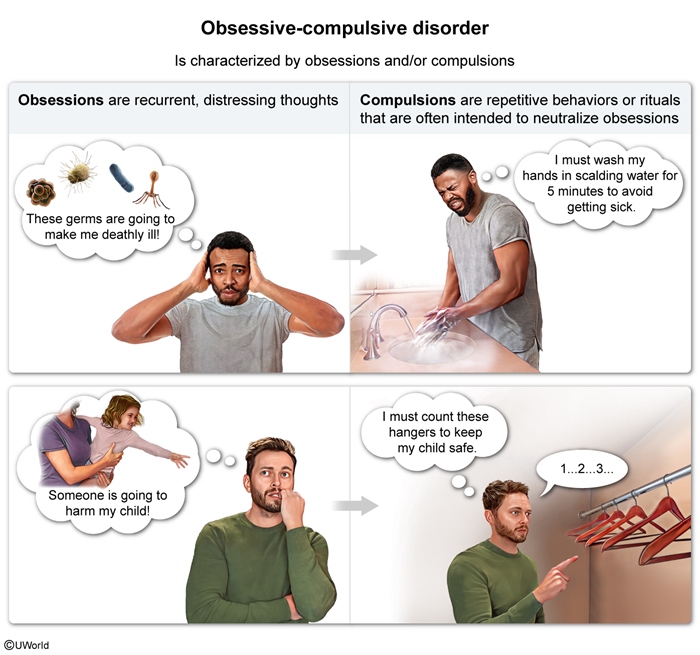Obsessive-Compulsive Disorder
Article Sections
Introduction
Obsessive-compulsive disorder (OCD) is characterized by intrusive and recurrent unwanted thoughts (obsessions) and repetitive behaviors or mental acts (compulsions). Obsessions and compulsions are highly variable and can change over the course of illness. OCD symptoms are time-consuming and result in significant distress and functional impairment.
Epidemiology
The estimated lifetime prevalence rate for OCD is 1%-2%. Onset of symptoms typically occurs by adolescence or young adulthood. OCD is slightly more common among women than men.
Clinical presentation
Obsessions consist of recurrent thoughts (eg, fear of contamination), urges (eg, to punch someone), or images (eg, graphic violence) and are associated with significant distress (Figure 1). Attempts are made to ignore the obsessions or neutralize them with another action (compulsion).
Compulsions can be any repetitive behavior (eg, showering) or mental act (eg, silently counting) performed to reduce anxiety or prevent a dreaded event. The compulsions are not realistically connected to preventing the feared event from actually happening (eg, arranging books until "just right" due to fear of stabbing spouse) or are clearly excessive (eg, sanitizing baby bottles 5 times due to fear of contamination).
Continue Learning with UWorld
Get the full Obsessive-Compulsive Disorder article plus rich visuals, real-world cases, and in-depth insights from medical experts, all available through the UWorld Medical Library.
Figures
